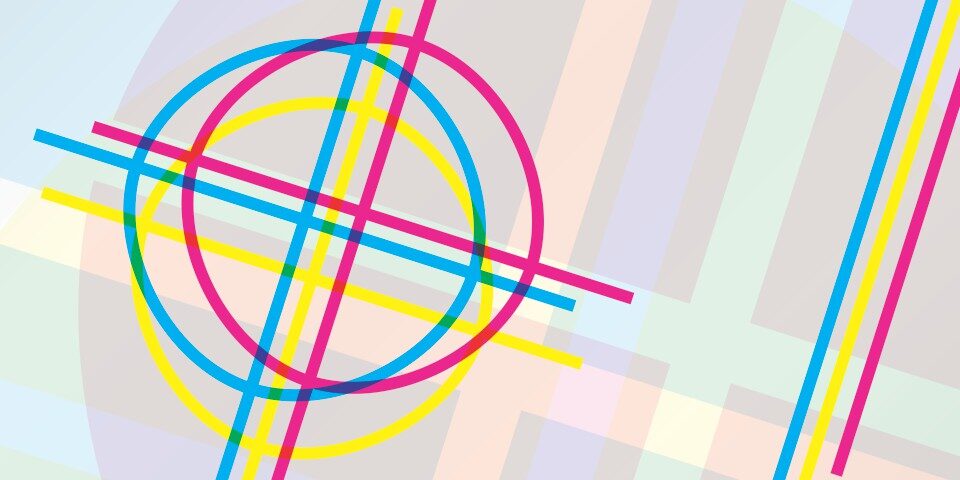Trapping is a pre-press technique that compensates for variations in registration during a print run. This is achieved by overlapping colours (spot or cmyk), helping to prevent unsightly white gaps showing between colours.
Registration means ensuring that colours are positioned exactly over each other and that the ink colours are registered with each each other.
Causes of Misregistration
Trapping is needed because of misregister during the printing process. It used to only be the responsibility of printers and repro houses, but has also become an important consideration for graphic designers.
Misregistration Can Be Caused by Any of the Following:-
- Paper twisting and bouncing as it moves through the printing press
- The paper is stretched by feeding mechanisms
- The sheet can change size as it absorbs moisture from the environment
- Errors in pre-press and platemaking


How Much Trapping is Required?
The amount of trapping required in a print job depends on the degree of fit between successive colour images, the type of press and substrate being printed.
Sheet fed offset litho presses require less trapping than web offset presses. The faster the speed of the printing press, the more chance there is of colours going out of register.
The amount of trapping necessary can be as little as 0.2 of a millimeter or as much as 2mm. Printers have their preferred trapping amounts, so it’s always a good idea to speak to your printer before preparing artwork for print.




